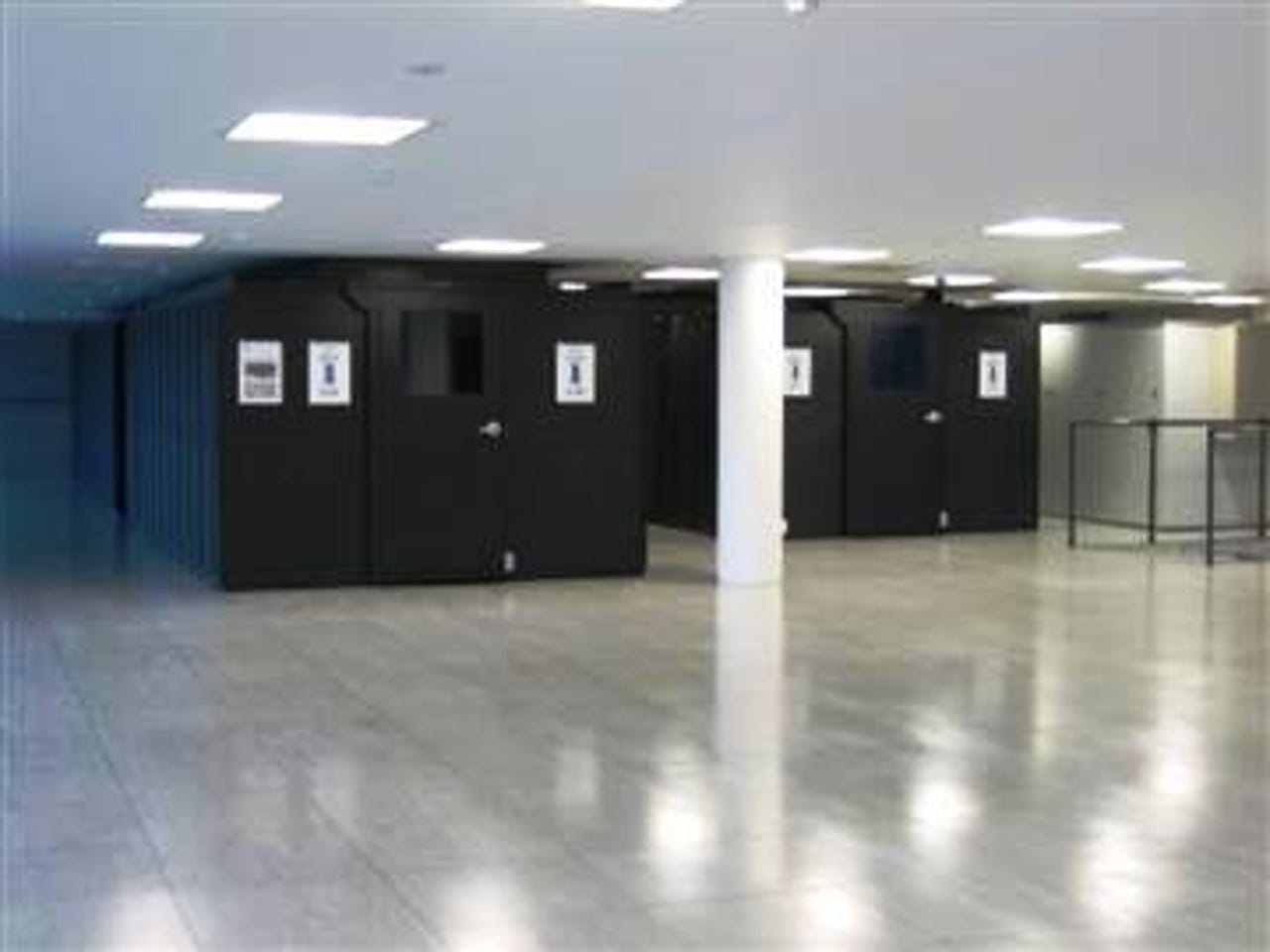Photos: A look inside one of the world's most efficient datacentres


It's all about air separation
This is the Ecofris datacentre, billed as one of the most efficient datacentres in the world. Built by Keysource, the datacentre relies on a technique called air separation and recirculation to make it as energy efficient as possible.
The facility in Weybridge, Surrey, belongs to onshore and marine seismic data acquisition and analysis company Petroleum Geo-Services (PGS).
It's been operating since just before Christmas, and PGS is on course to reduce annual power consumption by 15.8 million kWh and CO2 emissions by 6.8 million tonnes.
silicon.com went to see the datacentre in action.
Photo credit: Tim Ferguson/silicon.com
The datacentre has a power usage effectiveness (PUE) of 1.2. Developed by The Green Grid - an industry consortium promoting datacentre efficiency - the PUE is calculated by dividing the total facility power by the power actually used by IT equipment.
This equates to 83 per cent of power being used for IT and just 17 per cent for cooling - one of the lowest average PUE figures recorded.
Of the major datacentre-users globally, Google has reported a PUE figure of 1.2 while Microsoft is aiming to achieve 1.3 by 2011. The industry average is currently 2.2.
The servers are cooled by a hot- and cold-aisle system: air is brought in through cold aisles and, once it's been heated by the server racks, is whisked away through the hot aisle.
This is the back of one of the server racks, which feed into one of the facility's hot aisles.
Photo credit: Tim Ferguson/silicon.com
This is one of the hot aisles in the PGS datacentre where air collects after it has cooled the hardware.
The warm air is captured in a space in the roof known as a plenum, which takes it out of the datacentre to two external cooling modules. The temperature in the hot aisle fluctuates between 30C and 35C.
Photo credit: Tim Ferguson/silicon.com
This is the chiller that supplies cool water to a system of pipes to cool the air before it returns to the datacentre.
The temperature of the air going into the datacentre is around 20C but has risen to 27C when it re-enters the external airflow.
Photo credit: Tim Ferguson/silicon.com
This diagram shows how the air separation system works in detail. The datacentre is on the right, with the air recirculation system in the centre.
An additional external cooling system is on the left.
Photo credit: Keysource
Recirculated air passes through these filters to make sure it's suitably clean before being passed back into the datacentre with the help of fans beyond the filters.
Photo credit: Tim Ferguson/silicon.com
The cooled air returns to the datacentre through these vents at the back of the datacentre room at a rate of three cubic metres per second.
Photo credit: Tim Ferguson/silicon.com
Shown here is the external cooling system, which Keysource says PGS will only need to use for around 83 hours per year to provide additional cooling during hot weather.
Photo credit: Tim Ferguson/silicon.com
These are the adiabatic coils on the external cooling system, which are sprayed with mains-supplied water to provide additional cooling.
Photo credit: Tim Ferguson/silicon.com
Here's the water cooling in action. The system feeds into the normal air recirculation system when needed.
Photo credit: Tim Ferguson/silicon.com
This shows the kind of imaging and information that the datacentre produces from the data it processes for PGS. Here, a rock formation located under the seabed can be seen.
The Weybridge datacentre replaces the company's previous UK facility at Walton-upon-Thames. PGS has two other large datacentres - in Kuala Lumpur and in Houston, Texas.
Photo credit: Tim Ferguson/silicon.com